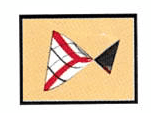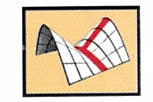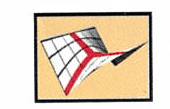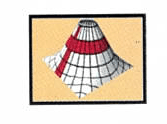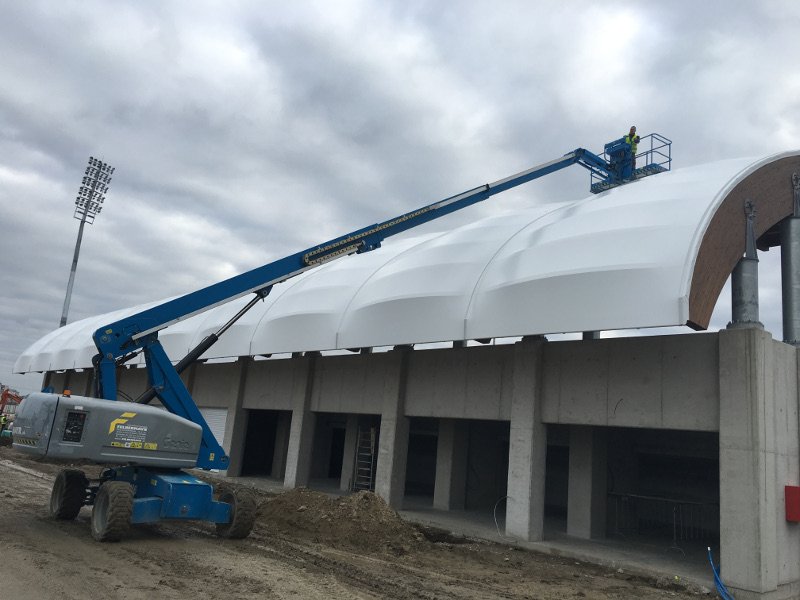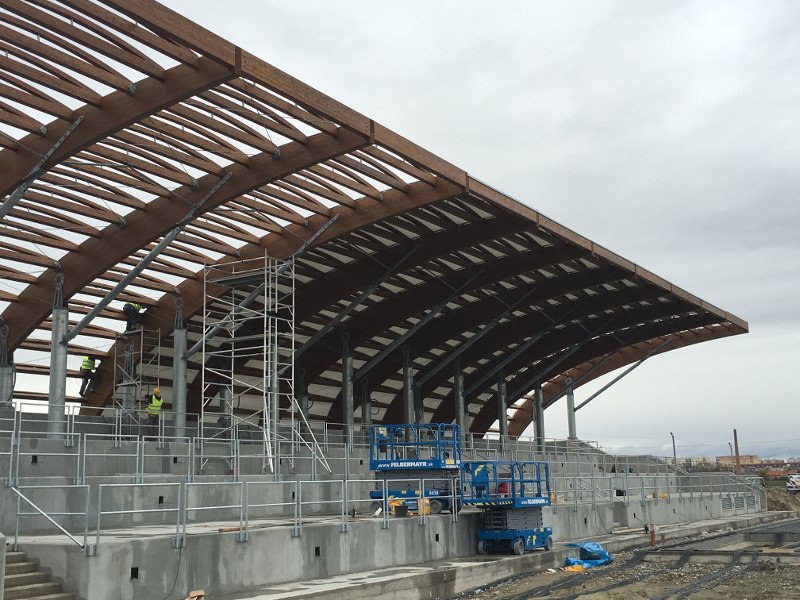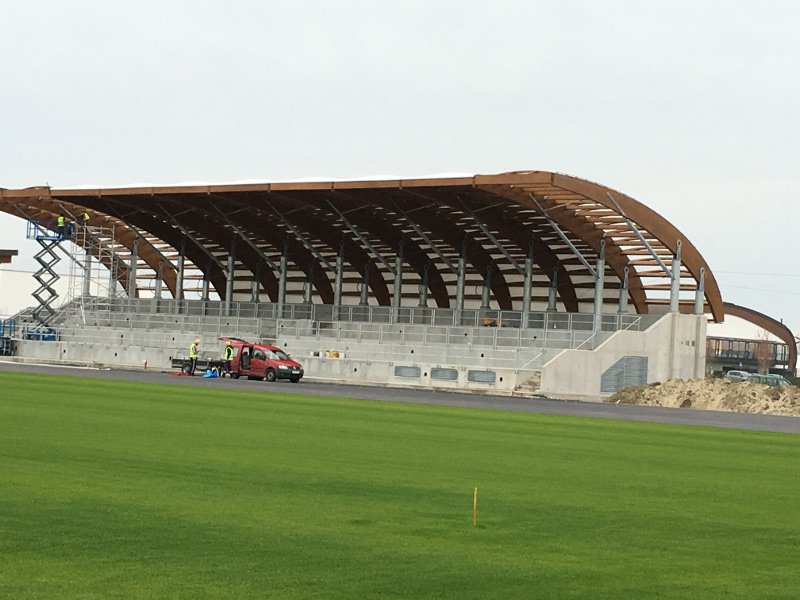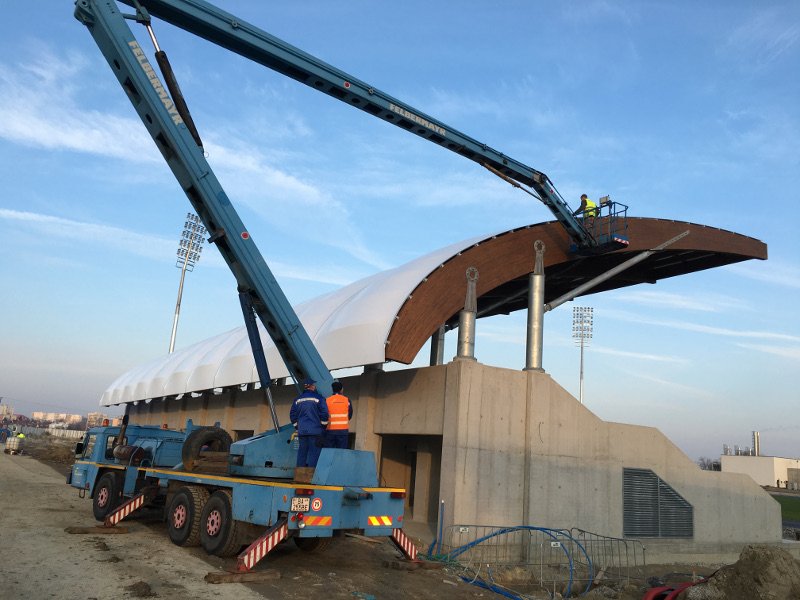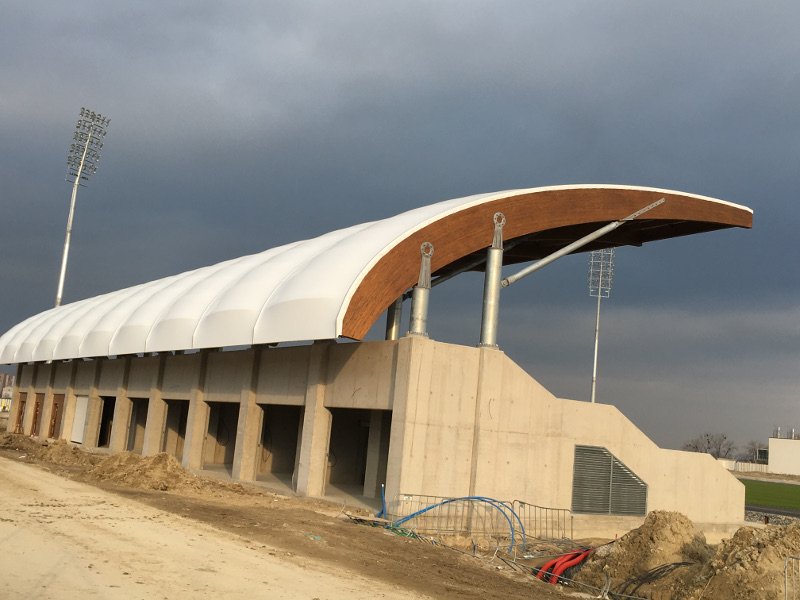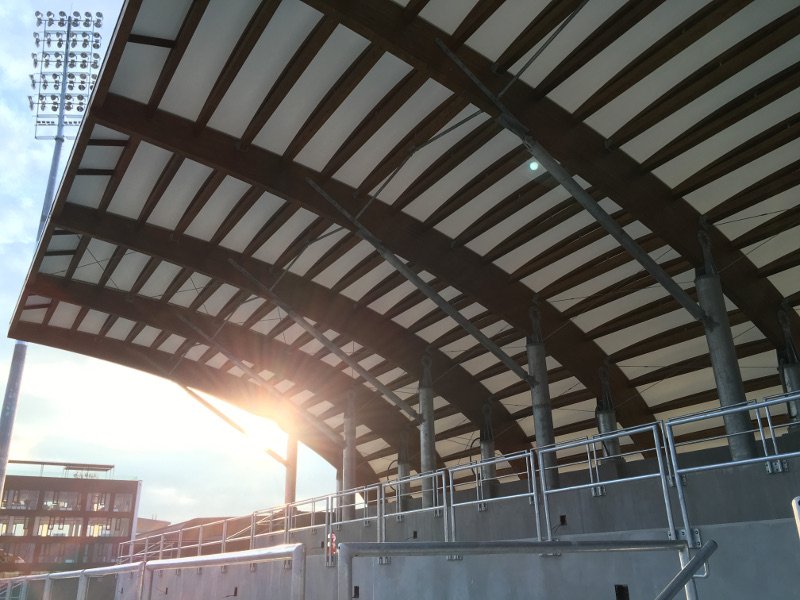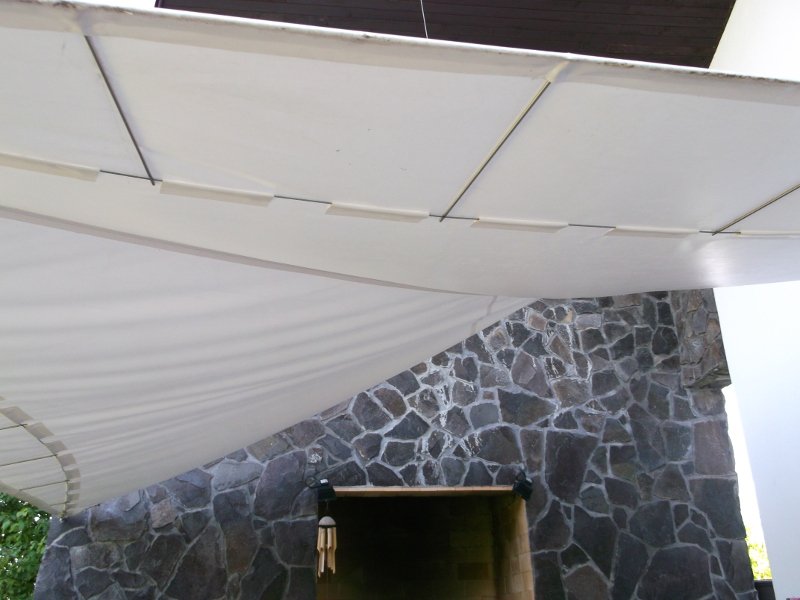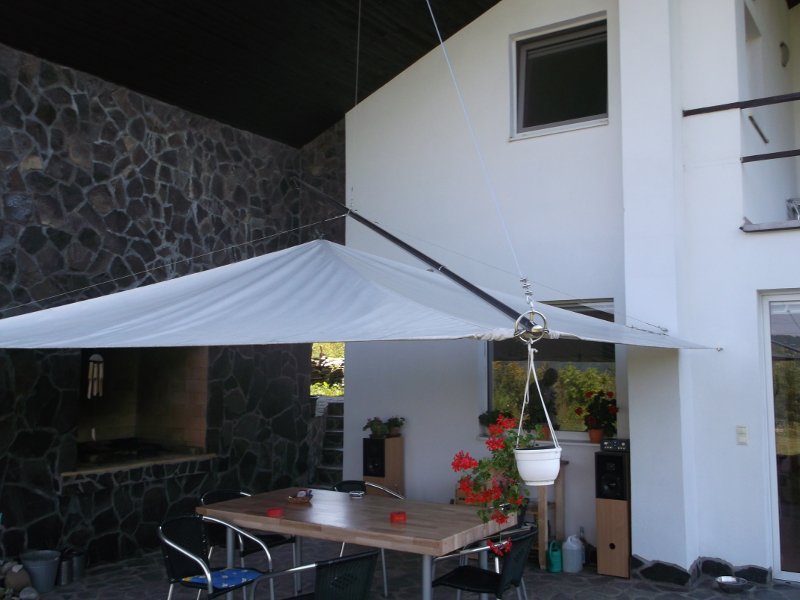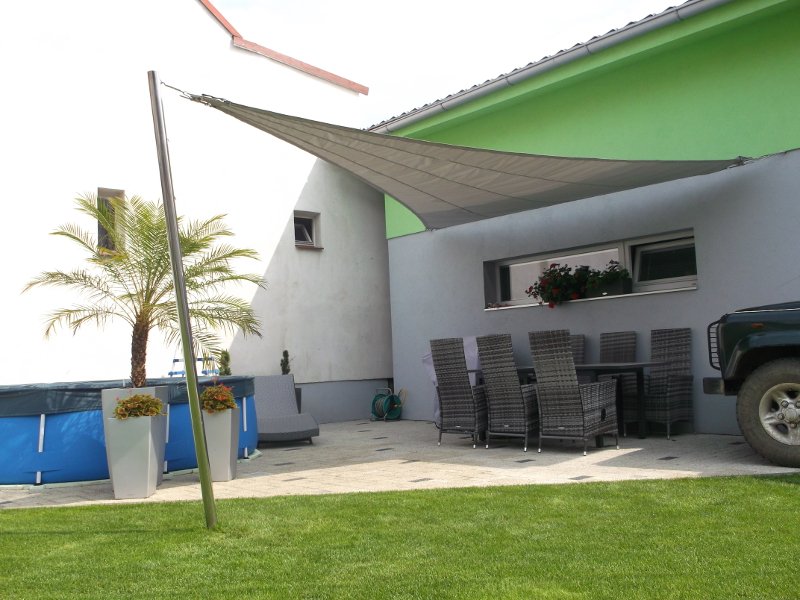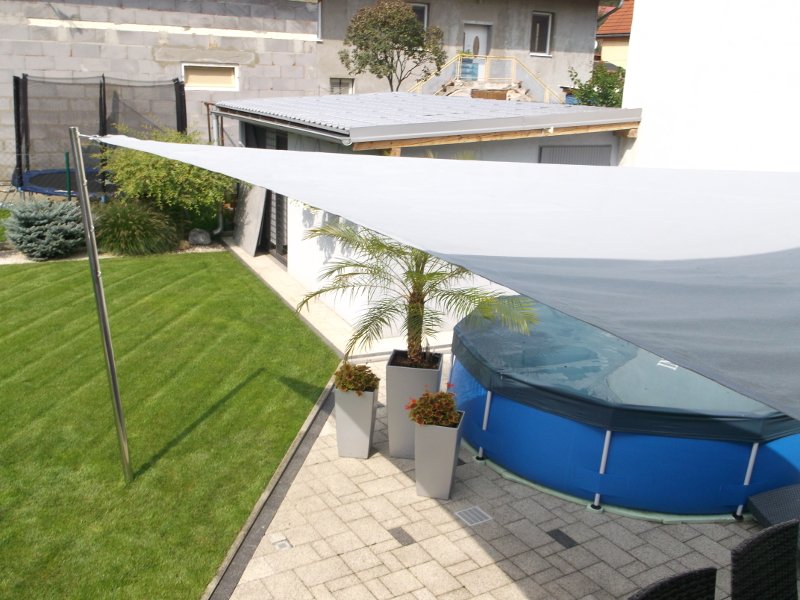Tarpaulin materials are more widely used in architecture, where they work not only as a functional part of the building, but also as the dominant design element. Those are mainly sports buildings - stadiums, socio-cultural areas, airports, stations, or car parks. They are also being applied to building facades or shades in family houses, triangular shielding tarps. There are PVC-PES materials with special coating, varnishing and high grammage are used on the membranes to provide UV stability and protection against pollution. Such tarps have a service life of more than 30 years. The service life of membrane structures depends on the following indicators:
Hyperbolic parabolite –the shape of the membrane structure is achieved by stretching the fabric in the direction of the inverted arcs, with the tensioning forces act on the square or rectangular fabric in the diagonal direction.

Saddle shape –is a modification of a rectangular shape, where the centres of the shorter sides are lifted into the arc and the long side is reduced by pulling its centre to reach the desired vault. In this case, one inverted arc is parallel to the vault and the other is rotated by 90
Ridge-trough – similarly, it is a square or rectangular modification where two parallel fabric edges are attached at the top and the desired shape and tension of the inverted arcs is achieved by means of a steel rope anchored to the floor.
Conical shape –is suitable to overlap square, circular or polygonal surfaces. I tis installed by pulling the corners of the fabric or by lifting the membranes centre. In the conical shape, the tension of the inverted arcs is reached when one arc directs from the top of the membrane to its base and the second inverted arc is parallel to the base.
- CS Safety factor CS (elasticity limit/max. operating load)
- membrane bias
- level of ambient pollution
- the thickness of PVC coating and PES fibers and the type of coating
Hyperbolic parabolite –the shape of the membrane structure is achieved by stretching the fabric in the direction of the inverted arcs, with the tensioning forces act on the square or rectangular fabric in the diagonal direction.
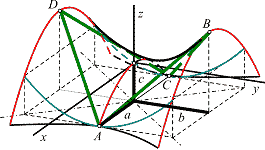
Saddle shape –is a modification of a rectangular shape, where the centres of the shorter sides are lifted into the arc and the long side is reduced by pulling its centre to reach the desired vault. In this case, one inverted arc is parallel to the vault and the other is rotated by 90
Ridge-trough – similarly, it is a square or rectangular modification where two parallel fabric edges are attached at the top and the desired shape and tension of the inverted arcs is achieved by means of a steel rope anchored to the floor.
Conical shape –is suitable to overlap square, circular or polygonal surfaces. I tis installed by pulling the corners of the fabric or by lifting the membranes centre. In the conical shape, the tension of the inverted arcs is reached when one arc directs from the top of the membrane to its base and the second inverted arc is parallel to the base.

